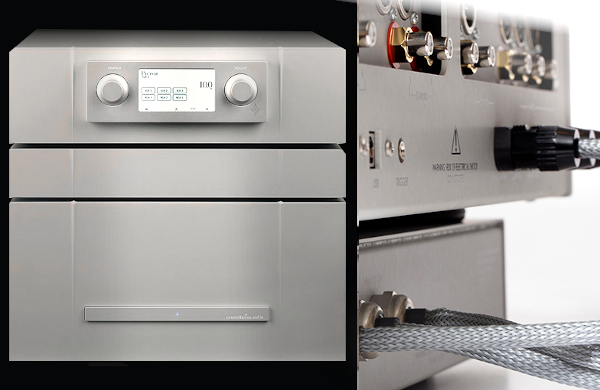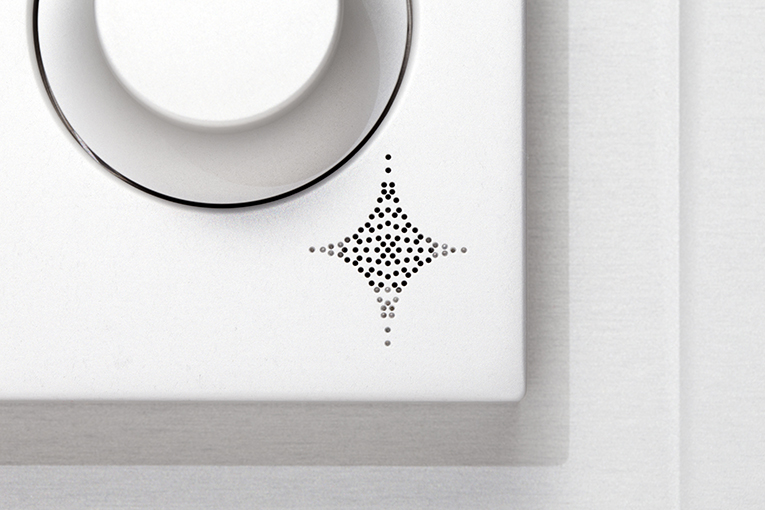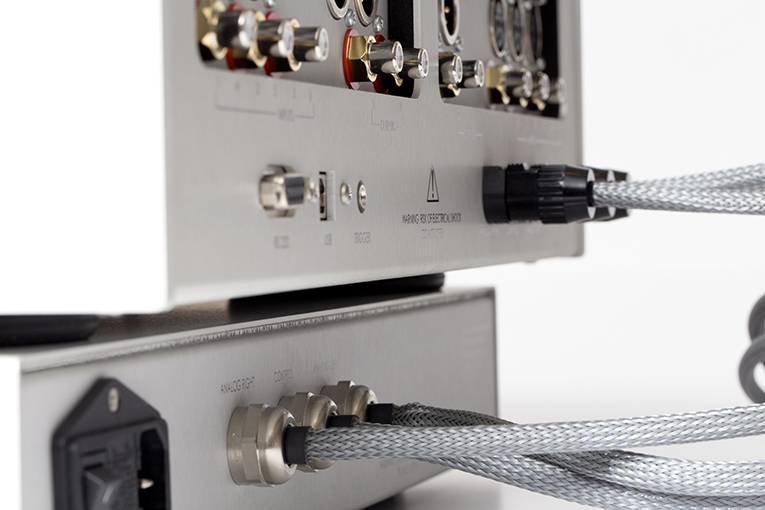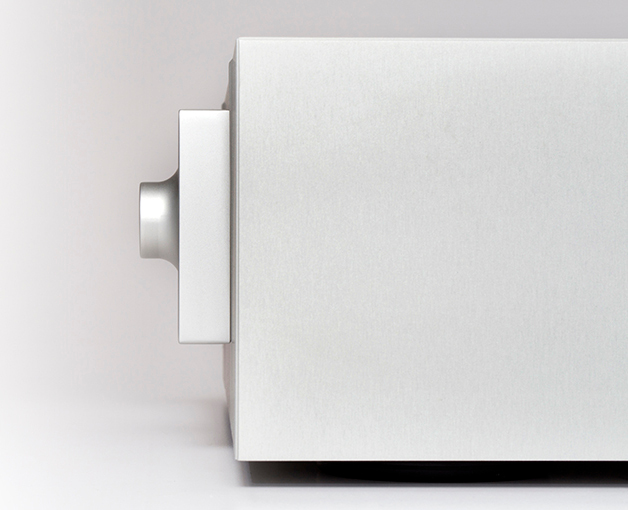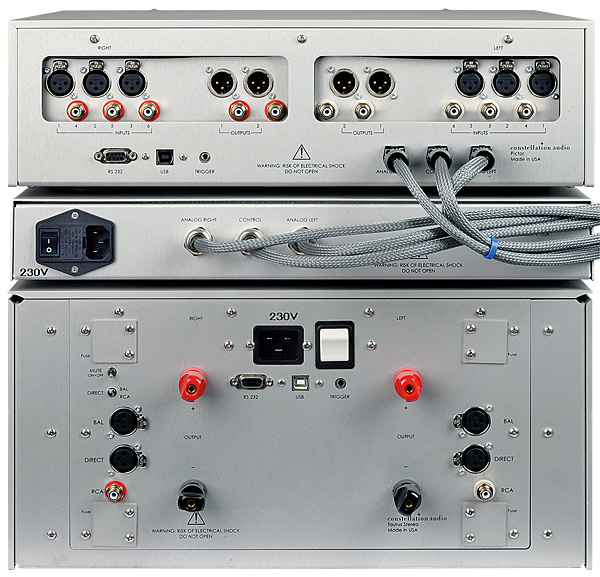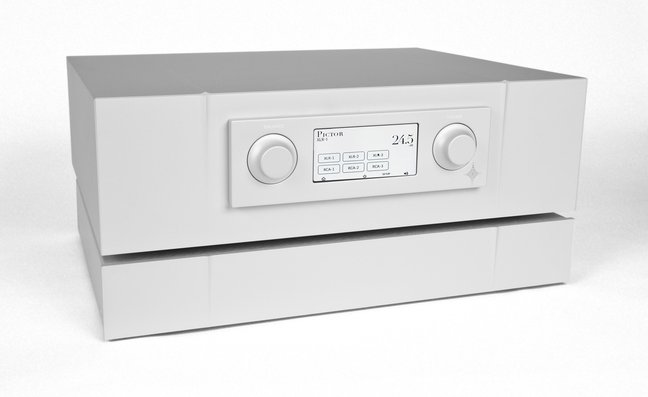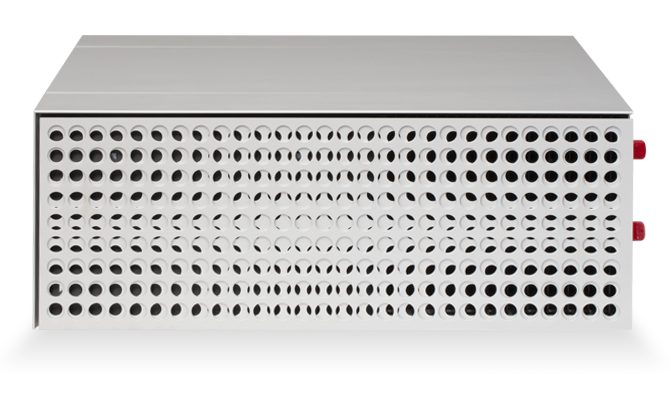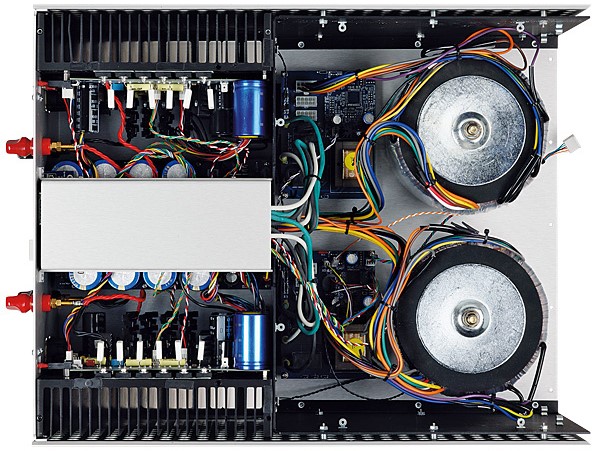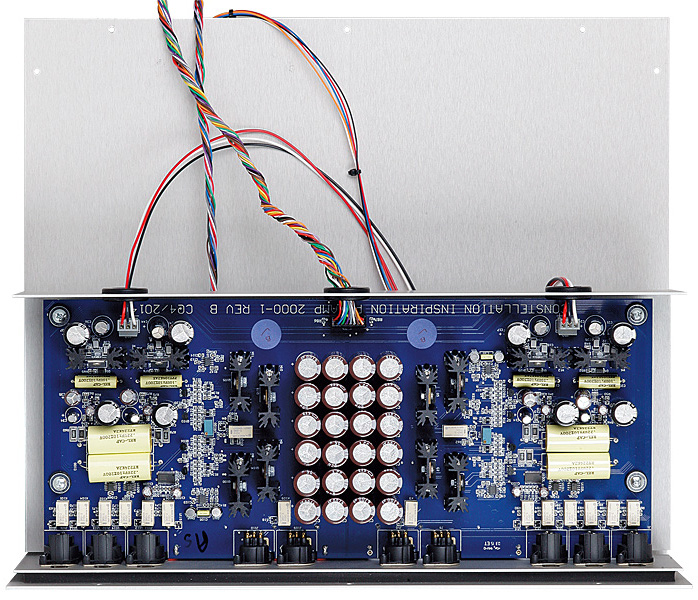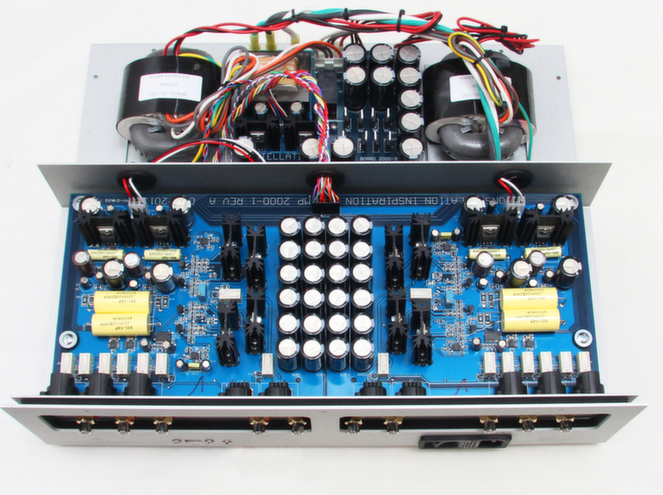CONSTELLATION AUDIO Pictor/Taurus
Preamplifiers
The funny fact about the Constellation Audio’s Pictor preamplifier and Taurus stereo power amplifier: in the company’s amplifier hierarchy they are a part of Revelation series which is a ‘compact car’ in automotive terminology. The other series are Inspiration (economy), Performance (family) and Reference (luxury). The other funny fact that for the price of the Pictor/Taurus a luxury car can be purchased. I see it as a big discrimination of audiophiles.
Another interesting fact is that the Pictor/Taurus are not derived from higher-in-range models (as is usual in audio), rather they are hyped-up versions of lower-in-range models.
Function and form
Constellation Audio Pictor:
The Pictor preamplifier is a dual-mono fully balanced design, based on FETs, with a separate outboard power supply, hence a two-box solution. If you put these two in one chassis then you essentially end up with Constellation Audio Inspiration 1.0 preamplifier.
The preamp can be either controlled via its decent touch-screen display (inky black on white) or with the help of small buttons that are hidden underneath the protruding part of the fascia and two knobs on the sides of the display that take care of volume and balance. The controllable parameters include powering on/off and stand-by, stereo balance, signal polarity, mute, theater bypass, display brightness, input sensitivity, and input selection. I don’t really know why designers decided to place the balance knob at such a prominent location as – if ever needed – it is set and forgotten. I would prefer to have the input selector on the fascia. The volume is stepped by 0.5dB in an attenuator fashion, so it shows attenuation rather than gain.
The external power supply connects to the main unit with 3 supplied umbilical cables and employs two R-core transformers for analogue circuits and an El-type transformer to power control circuits.
The Pictor offers 6 inputs (3xXLR, 3xRCA) and 4 outputs (2xXLR, 2xRCA) per channel. There is no phono and headphone preamp, nor a DAC. Although the Pictor has an USB on its rear panel, it is only for service purposes.
Constellation Audio Taurus stereo:
In specifications the Taurus is rated at 250W into 8ohm and 500W into 4ohm loads. I found interesting that Paul Miller (hifinews.com) measured the Taurus to clip at 655W into 4 ohms, so the power amplifier is largely underspecified. I cannot imagine loudspeakers that the Constellation Audio would fail to drive.
All Constellation amplifiers are built around the same “quasi-complementary” bridged module that uses a combination of P-Mosfets and N-Mosfets in a differential mode. Each module is 125W and has +14dB gain, several modules are employed depending on the type of amplifier.
Although the internal layouts are not overly complicated and look a bit messy for high-end standards, the chassis of all the devices are beautifully made from thick aluminum panels that should contribute blocking EM smog coming from outside.
The Taurus has only one pair of speaker terminals with + and – legs spaced quite apart so make sure that your speaker cable can reach the nuts. Also Constellation Audio warns about using speaker-level connection of subwoofers because the Taurus’ balanced bridged design which is likely to be incompatible with grounding scheme of a powered sub and may result into damaging the Taurus. The manual provides guidance on how to check whether it is safe or not to use the sub’s speaker-level inputs. If not, line-level inputs are recommended.
There is no obvious POWER button on the Taurus – you need to press the left side of the bar on the amplifier’s fascia to initiate start up. The left side of the bar mutes the signal. There is another MUTE toggle switch at the rear which comes handy if you need to reconnect cables.
No doubt that the Pictor and the Taurus are optimized to work in tandem, plus they are optimized to look as a tandem too. The preamplifier should be ideally connected to the Taurus (or any other Constellation Audio power amp) via one of the XLR outputs to the power amp’s DIRECT input. This way the gain stage of the power amplifier is bypassed which should be a purer path for audio signal. If you use XLR inputs on the Taurus, then J-FET input stage is added to the audio path.
Bass management
Using the Pictor with other brand of power amp (or vice versa) is a wasted opportunity. I owned topflight Accuphase amplifiers for years and had a rather short date with Boulder and VTL after that. For last 10 years I have been using Spectral and have never been tempted to change a thing. Until now. To me, the Constellation Audio pre/power represents an incredible combination of the best sonic elements of the competitors and does not add any serious flaw. As a tandem. That is why the following observations are related to the Pictor/Taurus pre/power system, rather than to how they sounded in isolation.
To power the Pictor/Taurus combo up feels like with valve amps – you need to wait roughly half a minute before the control circuitry makes all the checks and allows the tiny front LED to go from red through green to blue which is – finally - a sign of readiness to play.
Up to the time of writing this I have spent good two months with the Constellation Audio Pictor/Taurus combination driving my Wilson Audio Sasha W/P and another three months driving Magico M3 that have replaced the Sasha. And over those 5 months I was thinking about how to describe the sound of the Constellation set-up in one word. And I have one: unfolding. The music is neither projected out of the speakers at me, nor am I a watcher. The music unfolds from unspecified source, it floats in room, it embraces me and envelops me. This unfolding act was present with Sasha W/P, yet to lesser extent, and got only fully developed with the Magico. I borrowed two-way Focal Diablo Utopia III Evo in gorgeous British Racing Green finish for a week and got the same ‘unfoldingness’.
Clarity & delicacy
In Celestial Echo by Malia (Convergence) the sound seemingly detaches from not only the speakers but from the room itself. The depth and width becomes unconstrained and the voice floats in front of me in space. It is difficult to judge whether the music´s timbre is correct but the voice´s timbre definitely is.
In Diana Krall´s Devil May Care (Live in Paris) the piano exhibits three-dimensional presence on stage, the atmosphere is grand and spatial resolution of the live band is extraordinary. At the same time the Constellation Pictor/Taurus combo does not throw the hairline audiophile-style images that are spatially brittle and confine the listener to one optimum place only, rather there is natural gelling of instrumental lines with comfortably wide sweet spot that allows you to enjoy superb imaging while sipping a cup of tea, that is with your head not standing still.
Tonal accuracy
The drum sequence #3 from Nordost’s Set-Up Disc is a dynamic recording that jumps out of the speakers with verve and punch, perfectly centered, with the drum kit spread in its natural width and easily trackable reverb of a rather live studio. The bass was tight and visceral and highly musical, with less accent to mechanics and more accent to warmth.
Flying Pickets and Only You (Stereoplay Voices A Capella Special) is a great and revealing cut through the Constellation’s amplifiers. It has absolutely amazing tonality of the voices, with zero problems with sibilance, terrific articulation, and fantastic microdynamics. It also proves that the Pictor/Taurus have certain elegance to how they sculpt the sound, which is ‘sweet neutral’. I am not able to pick up why I think so – perhaps because the amps possess transparency that is tube-like, but which is exceptionally clean at the same time and is noise-free. No matter how successfully a valve amplifier is engineered I always suffer with the inherent noise of tubes, no matter how well suppressed it is. The background of Constellation Audio is quiet and clean and gives away the studio panning of the Flying Pickets song – that is individual voices being tracked and then assembled on a master tape, rather than recorded live.
Spatial resolution
Schubert pieces on Vilde Frang’s record (Warner) feature a grand piano. The piano not only extends over broad frequency range but also provides great macro and micro dynamics. From bottom to top, that is from its circa 28Hz up, the sound of the piano through the Pictor/Taurus rings with clarity and seductive harmonic sweetness that is not muddled and thick, but clean and fresh, with a pinch of vanilla for flavor. Another grand in the Mike Garson’s Let’s Dance (The Bowie Variations, Reference Recordings) provides darker sonority and beautiful balance between percussive attack and harmonic development, with each note clearly delineated from the other, and clearly heard reflections from the open board. Although my Spectral amplifier should be at home with RR recordings as it was used during the mastering process, the Constellation Audio combo is more pleasing and a bit more transparent, offers a bit more authority, definition and color shades. It is also a sort of ‘airier’, especially in the Direct mode that strips a bit of overtone bloom in favor of openness and added micro-dynamics, so the sound is truer to a recording.
From my writing it should be clear by now that the Constellation Audio Pictor/Taurus is not absolutely neutral amplification, but which is? It has slightly forgiving character but different from what I was used to hear from e.g. Accuphase amps. The Accuphase rounds the bottom end and the transients which provides comfort, however it softens the sound and very slightly smoothens it and smears it at the lowest octaves. The Constellation Audio smoothens the sound too and makes it less pixilated but at the same time it restores its transparency. I hear it with saxophones, trumpets and trombones – they are audibly smoother than real-life instruments yet they do not lack bite, agility and brassiness, all this without any glare and edge. In consequence the Constellation Audio combo is very easy to live with – some of the edgy recordings (even classical ones) become more organic and easeful through it.
I am not trying to say that the Constellation Audio Pictor and Taurus are the most accomplished amplifiers available – obviously they are not and Constellation Audio is more than ready to empty your pockets with other devices within its own line-up of electronic. On the other hand I have found all the aspects of the Pictor/Taurus performance exquisitely balanced. There is no free lunch as there is no “free of acoustic modes” listening room. But if the modes are evenly distributed and well suppressed it is rewarding.
Recommended resellers
No distributor at the time of the review.
Manufacturer's website: http://www.constellationaudio.com
Associated components
- Sources: CD/SACD/DVD-A Linn Unidisk 1.1, gramo TW-Acustic Raven One, Graham Phantom tonearm, Transfiguration Orpheus cartridge
- Amplifiers: Spectral DMA-150, phono Gruensch Reference Phonostage MCS
- Interconnects and speaker cables: MIT MA, MIT MA-X XLR, MIT V2.1 Oracle, Stealth Audio Hyperphono
- Loudspeakers: Magico M3 MPod, Focal Diablo Utopia III Evo, Wilson Audio Sasha W/P
- Power conditioning: Shunyata Research Triton v2/Typhon, Shunyata Research Python Zi-Tron, Shunyata Research Sigma v2 XC a v2 NR
ACCUPHASE C-3800
Nature works with infinite number of colors – hifi & high end components have very limited palettes, however. Fortunately we have already passed the black & white point yet a real orchestra sounds different from what one usually ...
Recommended resellers
Nisel SK, Bratislava, tel. +421 905 203 078
AUDIOMAT Opus 2
Philosophically speaking, how it is possible that the Audiomat listeners say that the voice of Frank Sinatra in Nice & Easy is perfectly realistic, undistorted and tonally correct? None of them have ever had a chance to hear ...
Recommended resellers
Interaudio SK, Komárno, tel. +421 905 884 677
BEL CANTO Pre3
It was as if the recording venue had new air filters installed and an extra dose of oxygen was pumped in during a performance – the sense of vertigo was very strong and I did not want to return back to the ´dusty´sound of everything ...
Recommended resellers
Hanzel Audio, Komárno, tel. +421 905 400 770
BESPOKE AUDIO passive preamplifier
This passive preamplifier is unprecedented. The level of customer care that is out into conceiving every single unit is amazing and throws you back in time, when shoes were made by shoemakers rather than chosen from a full shelves in ...
Recommended resellers
HI-FI studio TYKON, Ostrava, tel. +420 723 449 894
BOULDER 812
The Boulder 812 is a modern front-end that puts a preamplifier, a DAC, and a headphone amplifier under one hood. Although the brand is synonymous with boulder-like behemoths, the 812 is surprisingly smal. It has a square footprint of ...
CONSTELLATION AUDIO Pictor/Taurus
The funny fact about the Constellation Audio’s Pictor preamplifier and Taurus stereo power amplifier: in the company’s amplifier hierarchy they are a part of Revelation series which is a ‘compact car’ in automotive terminology. The ...
Recommended resellers
No distributor at the time of the review.
CREEK OBH-22
The Creek OBH-22 was a heart-stopper. When I substitued different preamps with it or when I used it as a front end of integrated amplifiers, it did not do anything that would impair the sound. So actually it did what it was supposed ...
Recommended resellers
High-End Audio Studio, Praha, tel. +420 224 256 844
